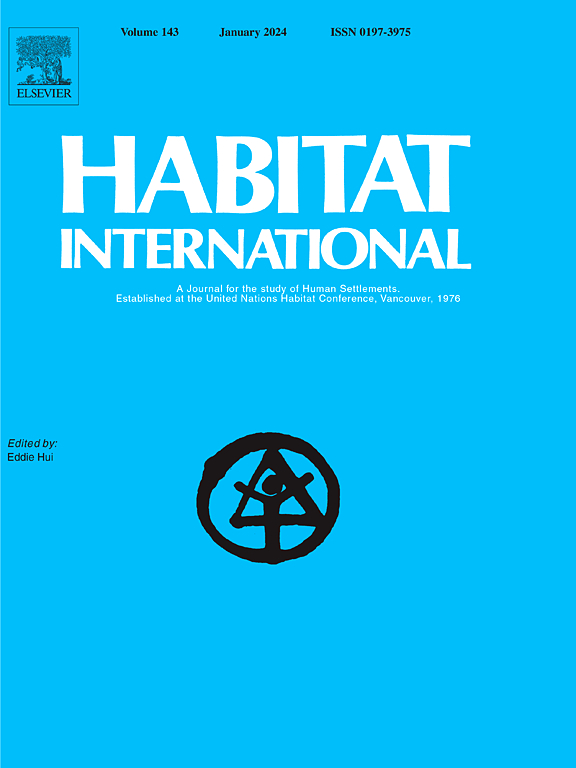高铁驱动下中国生态旅游可达性时空变化评价
IF 7
1区 经济学
Q1 DEVELOPMENT STUDIES
引用次数: 0
摘要
中国高速铁路网络的扩张对地方旅游经济和区域交通系统都产生了重大影响。然而,关于高铁发展对生态旅游可达性时空变化的响应,特别是在中国主要生态旅游中心,文献有限。本文旨在利用空间可达性分析方法定量评价广西旅游走廊主要生态旅游景区周边高铁网络的空间结构,填补这一空白。该研究考虑了各种因素,包括高铁站点位置、景点分布和道路分类。本研究利用环境适应加权平均方法,评估了高铁引入前后这些景点的可达性是如何变化的。研究结果表明,高铁显著提升了中国主要旅游景点的可达性,呈现出“中心性”和“扩散性”的格局。开放后,景点可达性在交通上呈现出明显的地理定向,整体网络更加集中。可达性分布的关键决定因素包括高铁网络配置、景点空间布局和高铁站点规模。总体出行时间大幅缩短,大部分景区可达时间由之前的9-10小时缩短至3.7-6小时。这种空间格局的压缩提高了可达性,6小时内可达景区的比例从31.58%显著提高到78.95%。重要的交通枢纽,特别是拥有高铁站点的城市,已经成为大大缩短旅行时间和增强区域旅游连通性的战略节点。本研究为政府部门制定高铁网络规划和区域旅游发展战略提供了科学依据。此外,它还允许旅游管理者优化选址和交通节点布局,最终促进区域旅游的发展。本文章由计算机程序翻译,如有差异,请以英文原文为准。

Assessing the shifts in spatiotemporal ecotourism accessibility driven by high-speed rail development in China
High-speed rail (HSR) network expansion in China has significantly impacted both the local tourism economy and regional transportation systems. However, there is limited literature regarding the changes in spatiotemporal accessibility to ecotourism in response to HSR development, particularly in key ecotourism hubs in China. This paper aims to fill that gap by using spatial accessibility analysis methods to quantitatively assess the spatial structure of HSR networks surrounding major ecotourism attractions in the tourism corridor in Guangxi, China. The study considered various factors, including HSR station locations, attraction distribution, and road classifications. Utilizing a context-adapted weighted average approach, this research evaluates how accessibility to these attractions has changed before and after HSR introduction. The findings indicate that HSR has significantly enhanced access to major tourist sites in China, revealing patterns of “centrality” and “diffusion”. After the opening, attraction accessibility displayed a distinct geographical orientation in traffic, with the overall network becoming more concentrated. Crucial determinants of accessibility distribution include HSR network configuration, attraction spatial arrangement, and HSR station scale. Overall travel times have drastically decreased, with most areas now accessible within 3.7–6 h, down from the previous 9–10 h. This compression of spatial patterns has improved accessibility, increasing the percentage of scenic spots reachable within 6 h significantly from 31.58 % to 78.95 %. Key transportation hubs, particularly cities with HSR stations, have emerged as strategic nodes that greatly expedite travel times and enhance regional tourism connectivity. This study provides a scientific foundation for government agencies in formulating HSR network plans and regional tourism development strategies. Additionally, it allows tourism managers to optimize site selection and transportation node layouts, ultimately fostering regional tourism development.
求助全文
通过发布文献求助,成功后即可免费获取论文全文。
去求助
来源期刊

Habitat International
Multiple-
CiteScore
10.50
自引率
10.30%
发文量
151
审稿时长
38 days
期刊介绍:
Habitat International is dedicated to the study of urban and rural human settlements: their planning, design, production and management. Its main focus is on urbanisation in its broadest sense in the developing world. However, increasingly the interrelationships and linkages between cities and towns in the developing and developed worlds are becoming apparent and solutions to the problems that result are urgently required. The economic, social, technological and political systems of the world are intertwined and changes in one region almost always affect other regions.
 求助内容:
求助内容: 应助结果提醒方式:
应助结果提醒方式:


